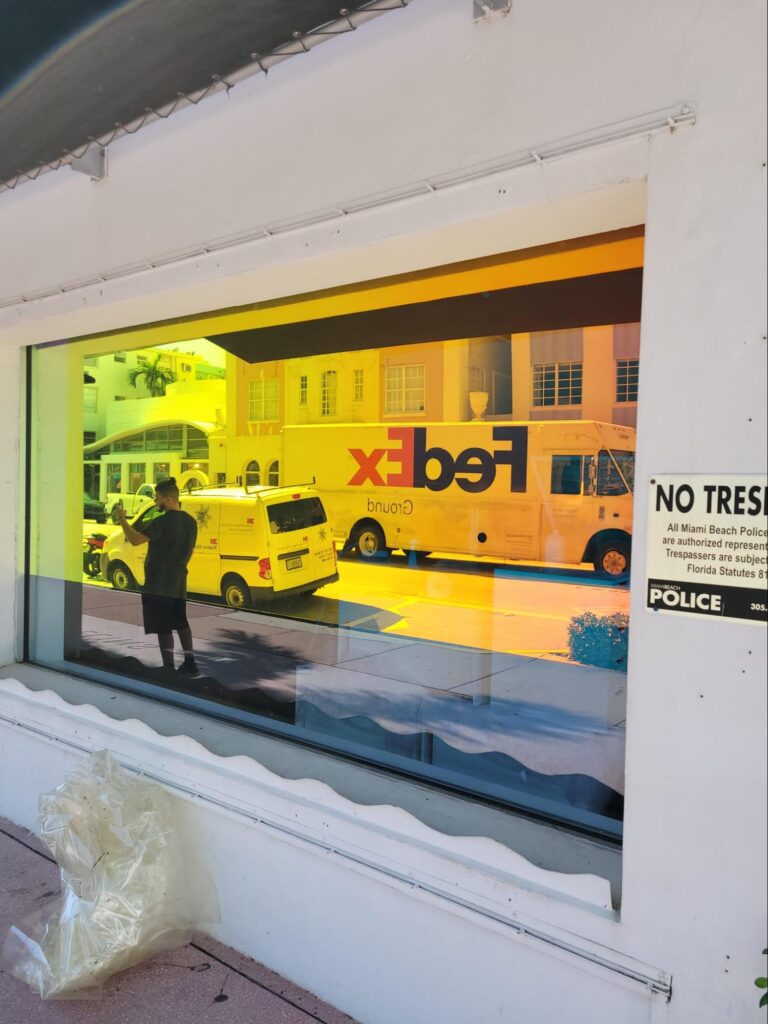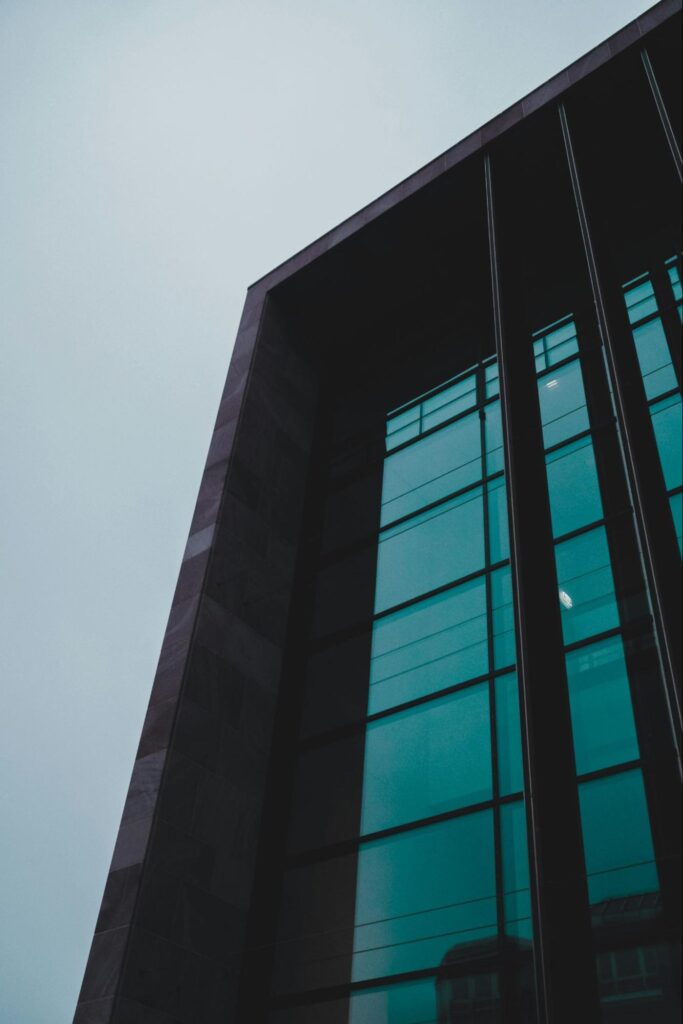In today’s competitive business environment, investing in commercial window tinting has become increasingly popular among business owners. Not only does it enhance the aesthetic appeal of a building, but it also offers numerous benefits such as energy efficiency, increased privacy, and protection against harmful UV rays. However, before deciding to install window tinting for your commercial property, it is essential to understand the various cost factors associated with this investment.
The Basics of Commercial Window Tinting
Commercial window tinting involves the application of a thin film to the windows of a building. This film is typically made of polyester or metalized material, which helps to reduce the amount of heat and glare that enters the building while still allowing natural light to filter through. Window tinting films can be transparent, reflective, or even colored, depending on the desired aesthetic and functional requirements.
What is Commercial Window Tinting?
Commercial window tinting is the process of applying a specialized film to the windows of commercial buildings. The film serves multiple purposes, including reducing heat and glare, protecting against harmful UV rays, and enhancing privacy. It is a cost-effective solution that can significantly improve the overall comfort and energy efficiency of a commercial space.
Benefits of Commercial Window Tinting
There are numerous benefits to investing in commercial window tinting:
- Improved energy efficiency: Window tinting can help reduce the amount of heat entering a building, which can significantly lower cooling costs during hot summer months.
- Enhanced comfort: Tinted windows can help regulate the temperature inside a building, creating a more comfortable environment for employees and customers.
- Increased privacy: By adding a tinted film, you can prevent prying eyes from peering into your commercial space without obstructing natural light.
- Protection against UV rays: Window tinting films can block up to 99% of harmful UV rays, protecting occupants and reducing the risk of fading furniture, flooring, and merchandise.
- Improved aesthetics: Window tinting can provide a sleek and professional appearance to your commercial building, enhancing its curb appeal.
Aside from these benefits, commercial window tinting can also contribute to a more sustainable and environmentally friendly business. By reducing the amount of heat that enters the building, window tinting helps reduce the reliance on air conditioning systems, thereby lowering energy consumption and carbon emissions. This not only benefits the environment but also helps businesses save on energy costs in the long run.
Furthermore, commercial window tinting can also enhance the security of a building. The tinted film acts as an additional layer of protection, making it more difficult for potential intruders to see inside and assess the contents of the building. This added privacy can deter criminals and increase the overall safety of the commercial space.
Factors Influencing the Cost of Commercial Window Tinting
When it comes to determining the cost of commercial window tinting, several factors come into play:
Commercial window tinting is a crucial investment for any business, offering benefits such as improved energy efficiency, UV protection, and enhanced privacy. Understanding the key factors that influence the cost of window tinting can help businesses make informed decisions when considering this upgrade.
Type of Window Tinting Material
The type and quality of the window tinting material can significantly impact the cost. There are various types of window films, ranging from standard dyed films to more advanced ceramic or nano-ceramic films. The latter options typically offer superior heat and UV rejection but may come at a higher price point. Businesses should take time to assess their specific needs and budget to determine the most suitable window tinting material for their commercial space.
Ceramic window films, for example, are known for their durability and heat rejection properties, making them particularly ideal for buildings in hot climates. On the other hand, nano-ceramic films offer high clarity and low reflectivity, providing a more natural view while still blocking UV rays. Investing in high-quality window tinting material can lead to long-term savings through reduced energy costs and improved comfort for building occupants.
Size and Number of Windows
The size and quantity of windows in a commercial building directly affect the overall cost. Larger windows or a greater number of windows will require more film and labor, driving up the price. Additionally, unusually shaped windows may require custom-cut film, which can incur additional charges. Businesses with expansive glass facades or multiple windows should budget accordingly for the increased material and labor costs associated with tinting these areas.
Moreover, the orientation of windows plays a role in determining the cost of window tinting. South-facing windows, for instance, receive more sunlight and may require specialized tinting to address heat gain issues. By considering the size, number, and orientation of windows, businesses can obtain accurate quotes and ensure that the window tinting solution meets their specific requirements.
Labor and Installation Costs
The complexity of the installation process and the labor required can impact the cost of commercial window tinting. Factors such as ease of access to windows, the height of the building, and the intricacy of the window frames can all influence the installation costs. Professional installation is essential to ensure the longevity and effectiveness of the window tinting, making it important to work with experienced professionals who can handle the intricacies of the job.
Additionally, businesses should consider the downtime required for installation when budgeting for commercial window tinting. While professional installers work efficiently, certain factors such as building size and the need for multiple visits can extend the installation timeline. By accounting for labor costs and installation complexities, businesses can streamline the window tinting process and minimize disruptions to their operations.
Understanding the Pricing Structure
When it comes to commercial window tinting, different pricing structures may be used:
Flat Rate vs. Per Square Foot Pricing
Some window tinting companies charge a flat rate for their services, which means the price remains the same regardless of the size or number of windows. This pricing model can be advantageous for clients with a limited number of windows or those looking for a straightforward pricing approach. On the other hand, some companies employ a per-square-foot pricing model, where the cost varies based on the total square footage of the windows being tinted. While this method can offer more flexibility for larger projects, it is essential for customers to carefully assess the total square footage of their windows to estimate the final cost accurately. It is crucial to clarify the pricing structure with the chosen provider to avoid any surprises or misunderstandings.
Moreover, some window tinting companies may offer a hybrid pricing structure that combines elements of both flat rate and per-square-foot pricing. This hybrid model can provide a balance between predictability and flexibility, offering clients a tailored pricing approach based on their specific needs and preferences. By understanding the nuances of each pricing structure, customers can make informed decisions that align with their budget and project requirements.
Additional Costs and Fees
In addition to the base cost of the window tinting, there may be additional fees or charges to consider. These can include charges for custom-cut film to fit uniquely shaped windows, the removal of existing tint, the cost of any additional security features such as shatter-resistant coatings, or warranty fees for extended coverage. It is important to discuss any potential extra costs with the tinting company upfront to ensure a comprehensive understanding of the final price and avoid any unexpected expenses during or after the project completion.
How to Budget for Commercial Window Tinting
Now that you have a better understanding of the cost factors involved in commercial window tinting, it’s time to consider how to budget for this investment:
Estimating Your Window Tinting Costs
To get an estimate of your window tinting costs, start by measuring the size of the windows you wish to tint. This will give you a clearer idea of the amount of material you will need and the labor involved in the installation process. It’s important to be as accurate as possible with your measurements to avoid any surprises when it comes to the final cost.
Once you have your measurements, it’s time to reach out to multiple window tinting companies and request detailed quotes based on your specific requirements. Be sure to provide them with all the necessary information, including the type of film you prefer, the number and size of windows, and any additional services or features you may need. This will enable them to give you a more accurate estimate.
When comparing the quotes, it’s essential to consider not only the price but also the reputation and experience of the tinting companies. Look for reviews and testimonials from previous clients to get a sense of their professionalism and the quality of their work. Remember, it’s not just about finding the cheapest option, but rather finding a balance between affordability and quality.
Saving Money on Commercial Window Tinting
While commercial window tinting is an investment, there are ways to potentially reduce the overall cost:
- Research and compare prices from different window tinting companies to find the most competitive rates without compromising on quality. Don’t be afraid to negotiate and ask for discounts or special offers.
- Consider energy efficiency rebates or incentives offered by utility companies or local government programs. These programs can help offset the cost of window tinting and encourage businesses to invest in energy-saving solutions.
- Opt for a higher-quality window tinting material that offers superior energy efficiency and durability. While it may have a higher upfront cost, it can lead to long-term savings on energy bills and maintenance costs. Think of it as a wise investment that pays off over time.
- Properly maintain your window tinting by regularly cleaning them and avoiding harsh cleaning agents that may damage the film. This simple act of maintenance can extend the lifespan of your tint and prevent the need for costly repairs or replacements.
By following these tips, you can make a well-informed budget for commercial window tinting and potentially save money in the process. Remember, it’s not just about the initial cost, but also the long-term benefits and savings that come with investing in high-quality window tinting.
Frequently Asked Questions About Commercial Window Tinting Costs
Are Commercial Window Tints Worth the Cost?
Yes, commercial window tints are worth the cost. They provide numerous benefits such as energy savings, increased occupant comfort, privacy, and protection against UV rays. The upfront investment can result in long-term savings and a more pleasant working environment for employees and customers.
How Long Does Commercial Window Tinting Last?
The lifespan of commercial window tinting varies depending on several factors, including the quality of the film, the climate, and maintenance practices. On average, high-quality window tints can last between 10 and 20 years. However, it is important to note that the warranty provided by the manufacturer may differ, so always inquire about the specific details when making a purchase decision.
Conclusion
In conclusion, understanding the cost factors associated with commercial window tinting is crucial for making an informed decision. Factors such as the type of window tinting material, the size and number of windows, labor costs, and the pricing structure all play a role in determining the final price. By budgeting and researching multiple quotes, considering energy efficiency incentives, and choosing a reputable and experienced tinting company, business owners can ensure a cost-effective investment that provides numerous benefits for their commercial space.


